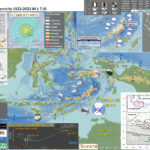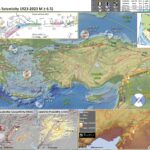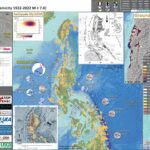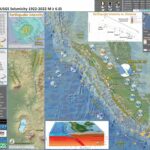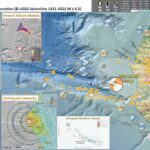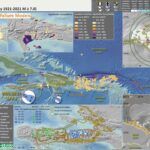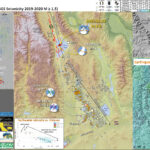Two nights ago as I was falling asleep there was a magnitude M 7.7 earthquake in Burma. I got up and thought about all the potential suffering. https://earthquake.usgs.gov/earthquakes/eventpage/us7000pn9s/executive Upon viewing the earthquake location on the map (the epicenter), I knew…
Earthquake Report: Banda Sea
The other evening (my time) I and many others noticed a series of earthquakes in the Banda Sea region. As is typical, people want as much information about these earthquakes as possible as soon as possible. There were two quakes…
Earthquake Report: M 7.8 in Turkey/Syria
We just had a severe earthquake in south eastern Turkey, northwestern Syria. We call this the Kahramanmaraş Earthquake https://earthquake.usgs.gov/earthquakes/eventpage/us6000jllz/executive Well, I learned tonight (14 Feb) that these M 7.8 and M 7.5 earthquakes have been named by the Turkey Minister…
Earthquake Report M 7.0 Philippines
I don’t always have the time to write a proper Earthquake Report. However, I prepare interpretive posters for these events. Because of this, I present Earthquake Report Lite. (but it is more than just water, like the adult beverage that…
Earthquake Report: M 6.2 along the Great Sumatra fault
There was a magnitude M 6.2 Gempa or Earthquake on 25 February 2022. https://earthquake.usgs.gov/earthquakes/eventpage/us6000gzyg/executive The plate boundary fault system that dominates the tectonics of the Island of Sumatera, Indonesia, is the complicated. The oceanic India-Australia plate converges with the Eurasia…
Earthquake Report: M 5.7 & 6.2 Mendocino triple junction
I was returning from New Orleans where I was attending the American Geophysical Union Fall Meeting. There was a short layover in Denver and I had a short time to find some food, which is challenging with my dietary restrictions.…
Earthquake Report: M 7.2 in Haiti
I don’t always have the time to write a proper Earthquake Report. However, I prepare interpretive posters for these events. Because of this, I present Earthquake Report Lite. (but it is more than just water, like the adult beverage that…
Earthquake Report: Croatia!
Yesterday as I was signing into work, my colleague Jackie Bott (a seismologist, seismic hazard/geology mapper, and on my tsunami team at CGS) mentioned the outer rise earthquake offshore of Chile that caused a small tsunami. https://earthquake.usgs.gov/earthquakes/eventpage/us6000d3i9/executive I checked this…
Earthquake Report: Owens Valley, CA
Well, the east side of the Sierra lives up to its reputation for being in earthquake country. From the July 2019 Ridgecrest Earthquake Sequence (reports here)to some shakers east of Mono Lake, to the May 2020 Monte Cristo Earthquake Sequence…
Earthquake Report: Banda Sea
Early morning (my time) there was an intermediate depth earthquake in the Banda Sea. https://earthquake.usgs.gov/earthquakes/eventpage/us70009b14/executive This earthquake was a strike-slip earthquake in the Australia plate. There are analogical earthquakes in the same area in 1963, 1987, 2005, and 2012 that…


